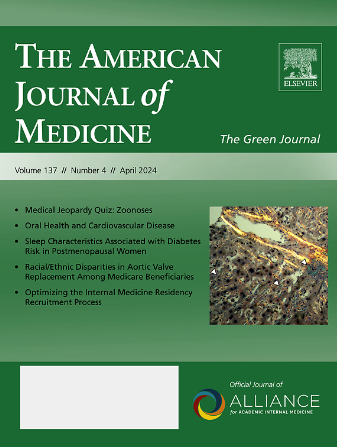疫苗安全性观察研究的特点与作者的态度:系统回顾。
IF 2.5
3区 医学
Q1 MEDICINE, GENERAL & INTERNAL
引用次数: 0
摘要
背景:许可后观察研究是疫苗安全性评估的主要方法。然而,这些研究在方法上存在众所周知的局限性,因此特别容易受到未测量混杂因素的影响。我们试图描述对疫苗安全性影响较大的观察性研究,调查作者对其研究结果和局限性的态度,并报告具体做法:我们在 Pubmed 上对六种顶级医学期刊上发表的疫苗安全性比较观察研究进行了系统综述,研究时间从开始到 2024 年 3 月:结果:共纳入 37 项研究,发表时间跨度为 1995 年至 2024 年。大多数研究侧重于 COVID19 和流感疫苗(分别为 11 项,占 30% 和 10 项,占 27%)。研究设计和方法各不相同。电子健康记录(54%)、被动监测数据库(32%)和国家登记处(27%)是最常见的数据来源。有一项研究使用了阴性对照结果。54%的研究承认存在残余混杂因素,另有24%的研究默认存在残余混杂因素。48.6%的研究注意到了旋转。本系统综述发现,在影响力较大的医学期刊上发表的观察性疫苗安全性研究报告的作者通常承认存在残余混杂因素,但很少使用阴性对照结果等方法来更好地检测未测量的混杂因素。此外,自旋现象也很常见,约有 50%的研究出现了这种情况:尽管我们的研究结果在一定程度上受到了研究评估主观性的限制,但它们表明,影响力大的期刊的编辑和审稿人应确保在报道观察性研究时使用的语言能准确反映研究结果及其局限性。本文章由计算机程序翻译,如有差异,请以英文原文为准。
Characteristics of Vaccine Safety Observational Studies and Authors’ Attitudes: A Systematic Review
Background
Postlicensure observational studies are the mainstay of vaccine safety evaluation. However, these studies have well-known methodological limitations, rendering them particularly vulnerable to unmeasured confounding. We sought to describe high-impact observational studies of vaccine safety, investigate the authors’ attitudes toward their study's findings and limitations, and report on spin practices.
Methods
We conducted a PubMed systematic review of comparative observational studies of vaccine safety published in the 6 top medical journals from inception to March 2024.
Results
Thirty-seven studies were included, spanning publications from 1995 to 2024. Most studies focused on COVID-19 and influenza vaccines (n = 11, 30%, and n = 10, 27%, respectively). Study designs and methodologies varied. Electronic health records (54%), passive surveillance databases (32%), and national registries (27%) were the most common data sources. Negative control outcomes were used in a single study. Residual confounding was conceded in 54% of studies, and an additional 24% did so implicitly. Spin was noted in 48.6% of the studies. This systematic review found that authors of observational vaccine safety studies in high-impact medical journals often acknowledge residual confounding, but rarely use methods like negative control outcomes to better detect unmeasured confounding. Furthermore, spin is common, occurring in approximately 50% of the studies.
Conclusions
Although our findings are somewhat limited by subjectivity in study assessments, they suggest that editors and reviewers of high-impact journals should ensure that the language used in reporting observational studies accurately reflects the findings and their limitations.
求助全文
通过发布文献求助,成功后即可免费获取论文全文。
去求助
来源期刊

American Journal of Medicine
医学-医学:内科
CiteScore
6.30
自引率
3.40%
发文量
449
审稿时长
9 days
期刊介绍:
The American Journal of Medicine - "The Green Journal" - publishes original clinical research of interest to physicians in internal medicine, both in academia and community-based practice. AJM is the official journal of the Alliance for Academic Internal Medicine, a prestigious group comprising internal medicine department chairs at more than 125 medical schools across the U.S. Each issue carries useful reviews as well as seminal articles of immediate interest to the practicing physician, including peer-reviewed, original scientific studies that have direct clinical significance and position papers on health care issues, medical education, and public policy.
 求助内容:
求助内容: 应助结果提醒方式:
应助结果提醒方式:


